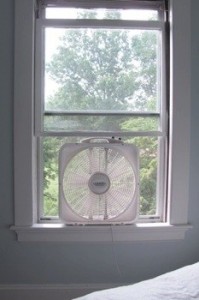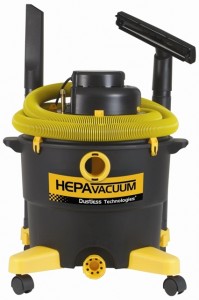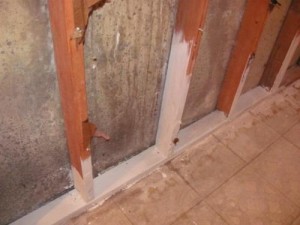How can I remove mold safely?
For large areas of contamination, you should always trust a professional. Look for someone with experience in mold remediation. Large-scale mold contamination can cause serious health side effects if it’s not handled correctly. For smaller areas of contamination you may be able to handle the cleanup yourself. In the event you do decide to try to go it alone, follow these steps as they apply to your home.
1. Identify and fix the moisture problem.
The most important step in solving a mold problem is to identify and correct the sources of moisture. A few of the most common moisture sources include:
- Flooding
- Condensation
- Firewood stored indoors
- Humidifier use
- Water leeching through basement walls or the slab
- Overflow from tubs, sinks and toilets
- Improper venting of kitchen and bathroom moisture
- Improper venting of combustion appliances
- Failure to vent clothes dryer outside
- Line drying laundry indoors
- Roof leaks
- Plumbing leaks
2. Dry all wet material.
You need to dry what is still wet. Once the leak is fixed either dry or remove all material that is wet. Using fans is not recommended since fans can blow mold spores all over your home! Air drying is best. Use a dehumidifier in the area. Dehumidifiers work by drawing up the air around them and removing humidity from the air and pushing dryer air back into the environment.
-
Before cleaning protect yourself! Spores cause health problems and working with mold and disturb and release vast amounts of spores into the air. The following equipment can help minimize your exposure to mold while you work.
- Rubber gloves
- Eye goggles
- Outer clothing that can be easily removed in the work area and laundered or discarded
- Medium- or High-efficiency dust mask. At a minimum use an N-95 rated or better mask
- Take steps to protect others, too! You should perform all work in a way that minimizes the spread of spores by:
- Enclose all moldy materials in bags before carrying through the home
- Attach plastic sheeting floor to ceiling and wall to wall to seal off the work area from the rest of the home
- Shut off ventilation systems including the air conditioning and heat — they can spread spores efficiently
- Use negative pressure ventilation by placing a box fan in an open window blowing out of the room to exhaust spores outside
- When finished, damp clean the work area surfaces to get up any spore dust that settled on them
- The solution to pollution is dilution!
3. Remove and dispose of mold contaminated material.
Any porous items which have absorbed moisture and have mold actively growing on them need to be removed, bagged and thrown away.
-
Remove sheetrock, insulation, carpet/pad, ceiling tiles and wood products (other than solid wood) from the area.
- Studs, plumbing and other items remaining in the area should be sealed with primer to seal the spores to the surface of the material. This will prevent those spores from contacting moisture so they cannot grow.
- Use a HEPA rated vaccum cleaner or attach an extension hose to shopvac and place the cannister outdoors. Bag any material in the cannister and clean in thoroughly before using it indoors again.
4. Clean contaminated surfaces.
Non-porous surfaces such as hard plastic, glass, metal, concrete and solid wood can be cleaned thoroughly using a solution of vinegar or Lysol disinfectant from the aerosol can. Use of bleach is corrosive and dangerous. Though it can clean mold, it is corrosive to the surfaces and can cause eye, nose and throat irritation. In fact, plain water is easier to use and works about as well as bleach because mold is a fungi, not a bacteria so it doesn’t “die.”
- Thoroughly scrub all surfaces with a stiff brush using a hot water and a non-ammonia soap or commercial cleaner (like Lysol)
- Collect excess cleaning liquid with a wet/dry vac, mop or sponge
- Rinse the area with clean water and collect and remove excess water
5. Disinfect/Seal Surfaces.
You can use a bleach solution with water to clean and disinfect the surfaces. This step is optional, but required if the leak involved sewage! This step kills bacteria and can help remove additional mold spores from the affected area. Wood, metal or other materials which would be damaged by a cleaning can be sealed with primer to lock in and hold mold spores to their surfaces while keeping moisture out, preventing any remaining residue from growing again.
6. Remain alert.
Once remediation is complete, check the area over some time to ensure all leaks are stopped and moisture is not getting into the area. Despite the best cleaning, mold spores cannot be completely elminiated. If moisture is again present, mold will again grow and you’ll be repeating these steps again!
When can I rebuild?
Rebuilding and refinishing must wait until the area is completely dry! Be patient as it can take considerable time for building materials to fully dry. Rebuilding too soon can cause a new mold problem to develop!



